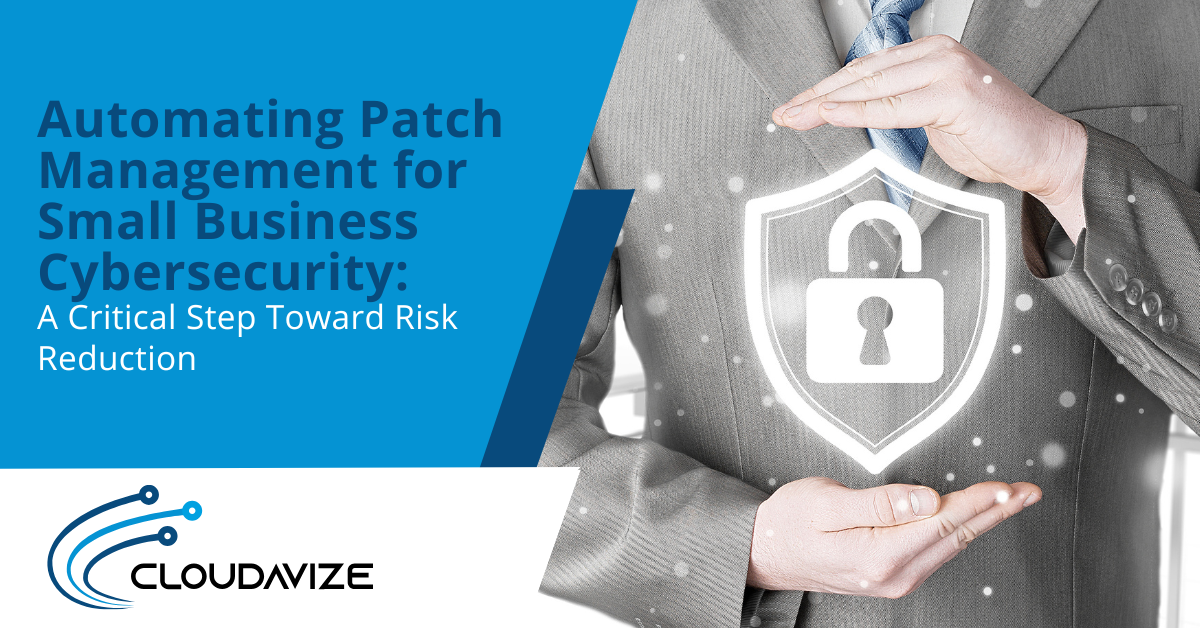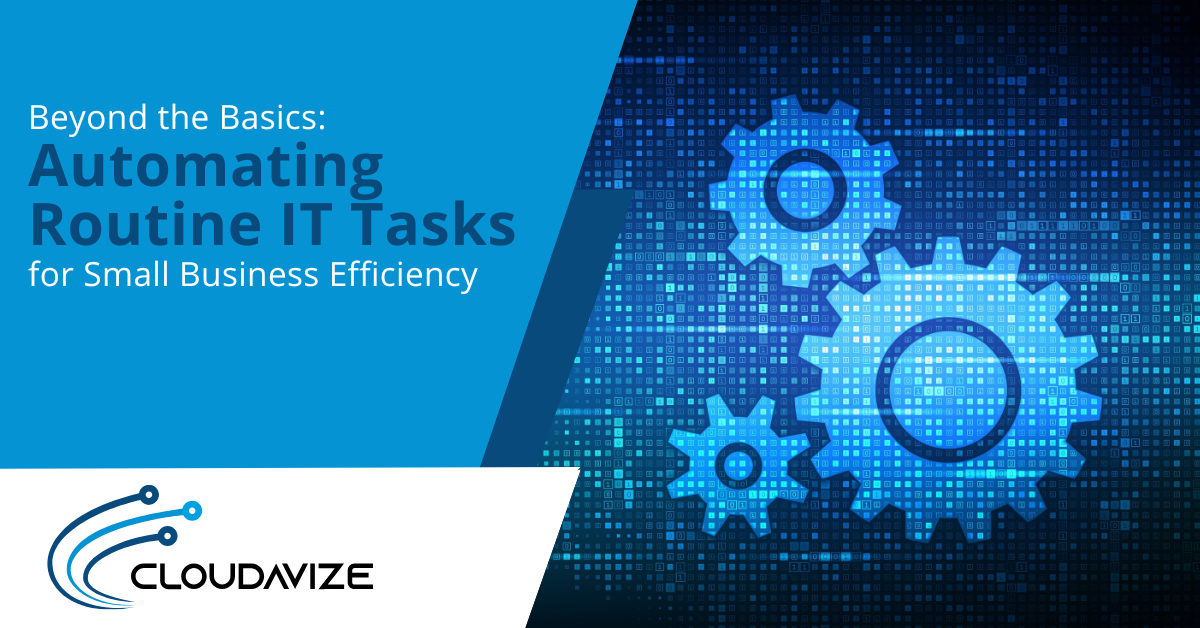Digital threats have grown in complexity and severity over the last decade. Small businesses can no longer ignore their cybersecurity strategy. A key component of any strategy is effective patch management. Cloudavize provides invaluable insight into how to best implement a patch management system.
With cyberattacks growing more advanced and frequent, outdated or unpatched software becomes an easy target. The impact can be devastating, ranging from unauthorized access to disruptions of core operations, making strong cybersecurity more vital than ever.
Unfortunately, many small to medium-sized businesses (SMBs) fail to perform patch updates adequately. For organizations with limited IT resources, patching can feel overwhelming and time-consuming. The result is an increased risk of exposure to cyber threats. Fortunately, automation now allows patching to be done with greater speed, ease, and reliability.
Table of Contents
Why Patch Management Matters
Patch management involves identifying, testing, and deploying updates known as “patches” for applications, operating systems, and even firmware. These patches are designed to address:
- Security vulnerabilities
- Bug fixes
- Performance improvements
- Compliance requirements
When systems remain unpatched, they become vulnerable to cyber threats. One of the most infamous examples occurred in 2017 when Equifax experienced a breach that exposed the sensitive information of 147 million Americans. The cause? A failure to apply necessary patches to critical network components. This incident underscores the importance of proper patch management.
Challenges in Patch Management
For SMBs, patching is not only critical, but so is the process of applying them correctly. Common challenges include:
- Limited IT staff: Smaller teams are already stretched thin. Patching often gets pushed aside for “urgent” tasks.
- Remote work environments: Employees may use their own devices, each with different operating systems and software.
- Fear of downtime: Business leaders often worry that applying patches will interrupt productivity.
- Lack of tracking: Without proper documentation, it’s hard to know which systems are up-to-date and which are at risk.
These challenges often result in a reactive approach, where patches are only applied after a breach occurs.
Why Automate Patch Management?
Automating patch management transforms updates from a reactive task into a proactive process, providing a reliable delivery and documenting framework that ensures updates are applied automatically. Here’s how automation helps:
Consistent and Timely Updates
Automated systems allow for device scans on a predetermined basis. This helps determine which devices need patches applied and which ones don’t. This ensures vulnerabilities are addressed promptly.
Centralized Visibility and Reporting
Management platforms provide network-wide patch status. This helps maintain proper compliance and allows for issues to be addressed quickly.
Reduced Human Error
Manual patching is not only time-consuming but also prone to mistakes. Automation ensures uniform application and reduces errors.
Scheduling and Testing
Automated systems can provide testing environments, allowing patches to be tested before delivering them to the live environment.
Scalability
When a company expands, so do its IT responsibilities. Manual patching can quickly become costly and time-consuming, but automation handles updates of any size with ease, whether it’s 10 patches or 10,000.
Key Features of Automated Patch Management Solutions
Not all automated patch management solutions are alike. Essential features for SMBs include:
- Multi-platform support
- Policy-based control
- Remote management
- Integration with RMM and EDR tools
- Comprehensive reporting
Important Implementation Steps
SMBs want smooth transitions when rolling out updates in their technology environments. To ensure they are as smooth as possible, the following should be considered:
Conduct a Baseline Assessment
Cloudavize always recommends a thorough IT assessment before making any changes. It’s essential to have a complete inventory of systems, applications, laptops, and desktops in the environment before deploying an automation tool. This allows SMBs to understand the current standing of their environment and the impact automated patch delivery will have.
Define Patching Policies
It is also essential to establish policies regarding patch testing protocols, expected update frequency, and how to handle exceptions.
Thorough Testing
Unverified patches can cause errors or downtime. A test environment allows issues to be identified and resolved before deployment.
Monitor and Adjust
Even with automation, active monitoring is critical. Analytics can provide insight into rollout performance and patch effectiveness, allowing SMBs to fine-tune their processes.
A Strategic Investment
Patch deployment automation is one of the most cost-effective tools available to SMBs. An automated solution ensures compliance and reduces vulnerabilities. Decades ago, manual application of patches might have been sufficient, but that isn’t the case any longer. The threat landscape has grown in complexity and severity. It now demands a concerted effort in patch management.
Without an automated patch management solution, your organization is operating on borrowed time. Cyber threats are everywhere.
Reach out to us today to learn how an automated patch management solution can strengthen your business. Cloudavize ensures a seamless transition to automation, protecting you from the financial, operational, and reputational risks of a cybersecurity breach.
We are Cloudavize, your trusted partner in cybersecurity.



